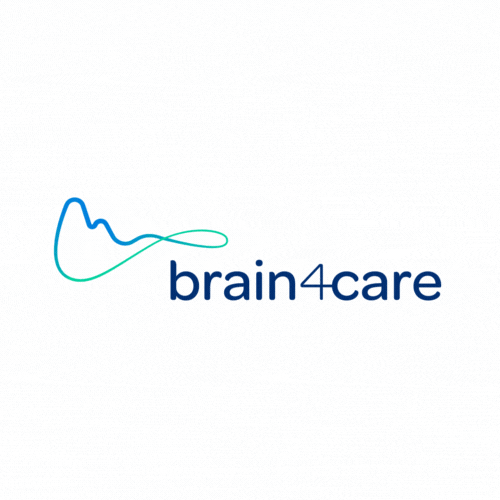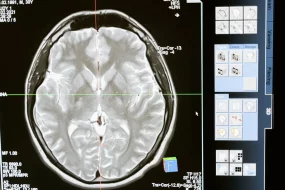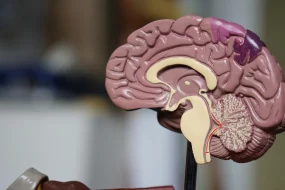
Carried out through the monitoring of ICU patients at Hospital das Clínicas of University of São Paulo (Brazil), the study compared the values obtained for the P2/P1 ratio and the time to peak using the gold standard (invasive) and the brain4care method
An article published in early December by the Journal of Personalized Medicine indicated that measuring changes in intracranial pressure (ICP) using brain4care’s wearable sensor monitoring system produces results similar to the gold standard ICP monitoring. The study was led by Sérgio Brasil, a postdoctoral researcher at the Department of Neurology at the University of São Paulo (USP), and carried out in six intensive care units (ICUs) at the university’s Hospital das Clínicas.
The results showed a statistically significant correlation between the ICP pulse morphology parameters obtained using the gold standard (invasive) and the brain4care method when comparing the ratio between the first two peaks of the ICP pulse (P2/P1) and the time to peak. The variations identified from the induction of an increase in ICP were also similar.
“This is fundamental research that, together with others, closes an important phase of research on the brain4care monitoring system, dedicated to its validation through comparative studies with the gold standard. The results were very satisfactory, indicating a high correlation and agreement with the parameters obtained by the invasive method”, points out Gustavo Frigieri, scientific director of brain4care and responsible for technical support to the research team.
Pros and cons: when to use invasive and non-invasive methods
Invasive methods for monitoring ICP involve perforating the skull and inserting pressure transducers through catheters into the ventricular, parenchymal, or subdural spaces, which may result in complications such as infection and hemorrhage. In addition, they restrict monitoring to specific situations of admission to hospital institutions.
The use of non-invasive methods, on the other hand, allows for continuous monitoring without risk to the patient’s health, enabling its application in many cases where the gold standard would not be used, such as in cases of patients undergoing treatments related to other systems of the human body, such as the kidney, presenting a relevant set of data to assist in the decision-making of physicians responsible for monitoring.
However, brain4care’s monitoring system does not completely replace invasive methods, which so far are the only way to obtain absolute ICP values. “In addition, there are invasive methods that have a therapeutic role, such as the intraventricular catheter, used for the drainage of cerebrospinal fluid (CSF), which for this reason are indispensable in the cases in which they are applied. However, even in these cases, the method is not invasive procedure can be useful in screening and identifying patients who would need to undergo invasive procedures”, evaluates Sérgio Brasil, the main author of the article.
Important information about the patient’s neurological status
The study also points out that the analysis of the ICP waveform and its correlated parameters can provide other important information, such as estimates of the state of intracranial compliance, the ability of the skull to adjust to changes in its internal volume in order to normalize the ICP .
“Each individual has a specific resistance to changes in ICP. Intracranial compliance, on the other hand, seems to be a more accurate balance sheet – if compliance is compromised, this is an indication that the harmony between the cranial components and the The skull’s capacity to compensate for the increase in ICP has already reached its limit and any new increase in volume can present serious risks to the patient’s health”, ponders Sérgio Brasil.
Methodology and procedures needed to save patients’ lives
The pilot study followed 41 consecutive patients admitted to Hospital das Clínicas between August 2019 and May 2020, whose cases required ICP monitoring through the gold standard, which requires skull perforation and insertion of pressure transducers through through catheters.
Additionally, the ICP waveform was monitored using brain4care’s non-invasive technology in ten-minute sessions that involved measuring other vital signs and manual internal compression of the internal jugular veins for one minute to induce an increase intracranial pressure, whose variation should be similarly detected by the two forms of monitoring.
Data (P2/P1 ratio and time to peak) were analyzed by dividing patients into three groups: those whose skull was kept intact, patients who suffered skull fractures or underwent craniotomy, and people who underwent decompressive craniectomy .
Both craniotomy and decompressive craniectomy are surgical procedures that involve opening the skull to drain hematomas in order to reduce intracranial pressure. Patients who underwent one of the two surgeries have intracranial pressure behaviors that are different from those who have an intact skull.
“These procedures are often essential to save the lives of patients, but they bring their consequences, such as morbidity, which is quite frequent in these cases. The immediate reduction in ICP, indicated by means of absolute values in mmHg, may lead to a misperception of normalization, because we identified that in these cases the intracranial compliance remained compromised”, points out Sérgio Brasil.
Access to the article and its conclusions
The paper “A Novel Noninvasive Technique for Intracranial Pressure Waveform Monitoring in Critical Care“, by Sérgio Brasil, Davi Jorge Fontoura Solla, Ricardo de Carvalho Nogueira, Manoel Jacobsen Teixeira, Luiz Marcelo Sá Malbouisson and Wellington da Silva Paiva, was published in the Journal of Personalized Medicine on December 5, 2021 and can be accessed through DOI: 10.3390/jpm11121302.





